Exploring the Cultural Identities of Students and Book Characters with Identity Intersections
Janine M. Schall
As a professor of undergraduate and graduate children’s literature courses, I have always encouraged my students to read global and multicultural literature. I believe it is important for students to experience the breadth and variety of available literature and to explore new cultures. When books are set in unfamiliar cultures, however, some readers have difficulty understanding the culturally driven behaviors and motivations of characters. It is easy for readers who do not understand how culture shapes behavior within a particular cultural setting to misinterpret the actions, beliefs and values of characters and how the characters interact with others within that setting.
Many students have simplistic understandings of culture and cultural identity, which leads to essentialized expectations of human behavior as people reduce the complexity of what it means to be human to labels and stereotypes. When readers approach multicultural or global literature with such a limited set of labels and understandings, it is easy to misconstrue the reasons characters act in the ways that they do. Instead of characters’ actions making sense within their cultural setting, readers may view their actions as weird, exotic, or wrong.
Rather than being essentialized and simple, culture and the cultural identities of people living within a culture are hybrid, interrelated, and constantly changing. Every person participates in a number of different cultural groups, which wax and wane in importance depending on time, location, and context.
Identity Intersections
One way I have encouraged readers to explore the cultural backgrounds and cultural identities of book characters is through a learning engagement that uses identity intersections. An identity intersection (Foss, 2002) is a graphic representation of interrelated and interconnected aspects of one person’s cultural identity (see Figure 1). The intersection identifies the cultural groups that a person claims affiliation with and indicates how those cultural groups interact to influence the way that person lives their life. Depending on how it is used, this learning engagement can help students recognize the importance of their own cultural identities to how they live their lives and the influence of cultural identities on how book characters live their lives.
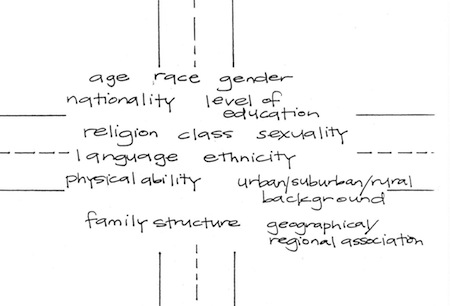
Figure 1. Identity Intersection format.
Identity intersections are created when one carefully considers how different aspects of a person’s cultural identity have shaped her/his life. This includes membership in easily recognized cultural groups based on race, ethnicity, religion, language, socioeconomic status and gender, but also other types of group membership such as geographic region, education level, physical ability, and family. Although the identity intersection begins with the format developed by Foss (2002), students are encouraged to add or remove any aspects that they perceive as important or unimportant to the cultural identities under examination. Students often choose to add memberships in groups based on professions and hobbies to their identity intersections.
Once students have decided which aspects belong on their identity intersections, they think about the influence each aspect has had on their lives or the life of a book character. Each aspect of cultural identity may be more or less important at different points in life or in different contexts. For example, Beth, a recently married female student, talked about how both her perception of herself as a woman and the way other people treat her have changed since her marriage. She reported that her gender had gained a more prominent role in her life as she and her husband were figuring out their roles in the marriage and as she was beginning to think about having children.
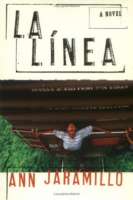 Students also consider how various aspects of their cultural identities are connected. Aspects of cultural identity are interrelated and influence each other. For example, after reading the realistic fiction novel La Línea by Ann Jaramillo (2008), one small group created an identity intersection for the character of Elena. They discussed how her fierce independence had been fostered by her family structure, the absence of her parents who had migrated to the United States, and the guidance of her loving grandmother.
Students also consider how various aspects of their cultural identities are connected. Aspects of cultural identity are interrelated and influence each other. For example, after reading the realistic fiction novel La Línea by Ann Jaramillo (2008), one small group created an identity intersection for the character of Elena. They discussed how her fierce independence had been fostered by her family structure, the absence of her parents who had migrated to the United States, and the guidance of her loving grandmother.
Students create a graphic representation of the cultural identities in an identity intersection. Some students choose to use the same format as Foss’ original identity intersection, but I encourage them to emphasize perceived importance and interrelatedness through the way they organize aspects, and how they use size, color and font. Aspects that are perceived as most important can be emphasized by making them larger than less important aspects. They may also be placed in such a way as to show their importance, perhaps by putting highly important aspects at the top of the identity intersection or by placing them at the center and arranging other aspects around them. Connections between aspects can also be shown, for example, by writing connected aspects on the same line or in the same color.
Finally, students reflect on their work through writing or discussion. Like many learning engagements, an identity intersection can be a rote formulaic assignment if students are merely labeling aspects. The power of the identity intersection as a learning tool is in how it supports thinking about culture and cultural identities. Opportunities for reflection and thought should be woven throughout this engagement.
Beginning with an Exploration of Students’ Own Cultural Identities
Before we begin using identity intersections to examine book characters, we examine our own cultural identities. We do this so that students have an example of what kind of thinking is expected in this engagement, but also because I believe that students need to understand the role culture plays in their own lives in order to understand how important it is for others. Many students, particularly those from white, middle-class American settings, are not accustomed to thinking about themselves in this way. They believe strongly that the way they live their lives is an individual choice and the idea that membership in various cultural groups influences their choices is a difficult concept for them to grapple with. Because of this, as we begin working with identity intersections students are reading professional articles about identity and exploring children’s literature related to the theme of identity. Modeling my own identity intersection has also been extremely important. I introduce this engagement by creating my identity intersection on the projector and talking about how each aspect shown on the intersection influences how I live my life. Next, students create their own. Sometimes this is done in class; other times it is a homework assignment. When done as a class assignment, students have time to talk about whatever parts of their identity intersection they’d like to share. When done as a homework assignment, students write a 1-2 page reflection as part of the assignment.
The two examples below are from identity intersections completed as homework. Excerpts from their written reflections are below each identity intersection.
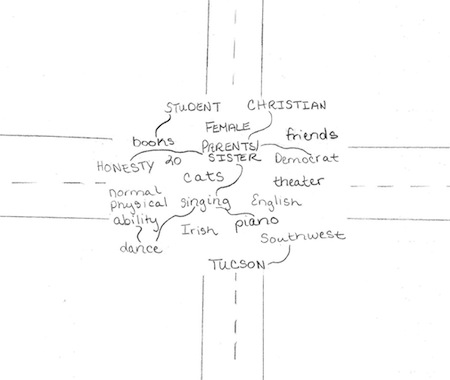
Figure 2. Elena’s identity intersection.
In her reflection, Elena described her identity intersection:
For my identity intersection I capitalized the things that I find most contribute to my identity. These were things such as my family, my religion, and my school. I also connected the things which I felt had a strong link. The things that connected were mostly hobbies that I enjoy doing. Although this is my identity now, my identity is continually changing….I do not have a certain system to my identity intersection except that I tried to keep the things closely connected together.
Elena used Foss’ basic format and included many of the aspects that appear on that format, including age, gender, religion, language, ethnicity, physical ability, geographic association, and family structure. She also added her political affiliation and hobbies/interests. Elena did not include anything about her race, nationality, or sexuality, most likely because she did not believe that they influenced her life in a significant way.
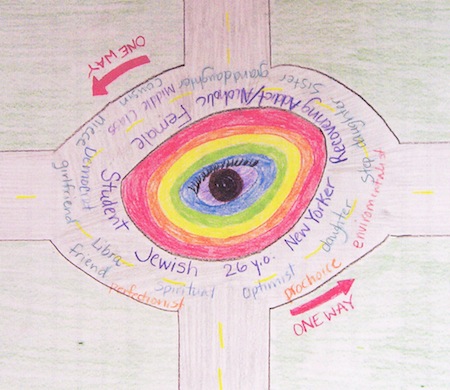
Figure 3. Mara’s identity intersection.
In this excerpt from her reflection, Mara describes her identity intersection:
I made my identity intersection a one-way circle because right now in my life, things are pretty circular. Eventually, when I graduate next May, I will exit onto one of those streets. My life is one-way because I don’t believe in going backwards or having regrets. I try to learn from my experiences and grow from them, always moving forward, closer to my dreams.
The words I chose to identify myself are pretty self explanatory. The words closest to the rainbow are those things that are most important to my identity today, especially being a 26 year old female student who is also a recovering alcoholic/addict. The fact that I am Jewish and from New York is significant also since it affects how I relate to people.
Mara chose to modify Foss’ format into an organization more meaningful to her life. She included aspects such as age, gender, religion, class, ethnicity, urban background/geographic association and family structure. Like Elena, she added political affiliations. She also added some values and personality traits. Mara chose not to include anything about her race, sexuality, language, or physical ability.
Using Identity Intersections to Explore the Culture and Cultural Identities of Book Characters
After students have had the opportunity to explore their own cultural identities through identity intersections, we use them to examine book characters, particularly for books that portray unfamiliar cultural settings. Students have done identity intersections both as individual reflections and as an engagement to support and extend talk during literature discussions.
In our children’s literature course students regularly choose multicultural and global children’s literature to read for literature discussions. To prepare for these discussions, students are asked to complete an individual reflection about the book. Students are sometimes assigned the reflection format and other times can choose whether they want to reflect through writing, art, music, graphic organizers, or other methods. These reflections give the students a place to record their initial thinking about the book, which leads to richer, more thoughtful discussions.
Jenny used an identity intersection in her reflection to examine the main character in Catherine, Called Birdy (Cushman, 1994), a historical fiction novel set in medieval England. In this book, spirited and independent Birdy struggles with her constrained role as a noble female while also trying to thwart her father’s plans of marrying her off to a rich man.
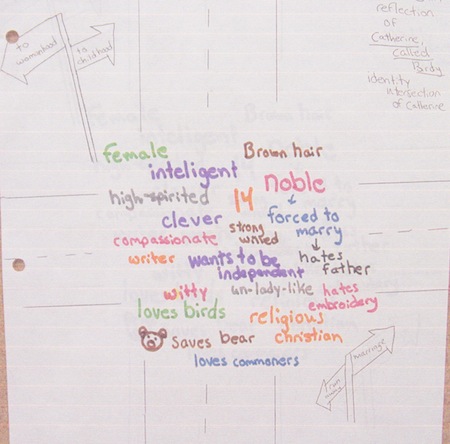
Figure 4. Individual reflection in preparation for a literature discussion over Catherine, Called Birdy.
In her identity intersection, Jenny included aspects such as gender, age, class and religion. She also added many personality traits. Jenny brought this identity intersection to her small group literature discussion and shared her work as the group began talking about the book. This gave the group an initial direction. Throughout the discussion, Jenny referred back to the identity intersection, explaining why she included these particular aspects and connecting them with specific events in the book. The group spent a long time talking about what it would be like to be female in medieval England.
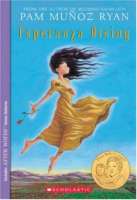 At other times we used identity intersections as a group engagement in order to extend and support talk during literature discussions. The small groups always had time to freely discuss the book, but after this open discussion, I often asked them to focus their discussion on an exploration of a single theme or character. When focusing on characters, the group chose which character to talk about, and created an identity intersection as they examined the character. In the example below, a group discussing Esperanza Rising by Pam Muñoz Ryan (2002), focused on the central character of Esperanza. In this historical fiction novel, Esperanza lives a privileged and pampered life in Mexico until her father dies and she and her mother are forced to flee to the United States for a life as migrant workers.
At other times we used identity intersections as a group engagement in order to extend and support talk during literature discussions. The small groups always had time to freely discuss the book, but after this open discussion, I often asked them to focus their discussion on an exploration of a single theme or character. When focusing on characters, the group chose which character to talk about, and created an identity intersection as they examined the character. In the example below, a group discussing Esperanza Rising by Pam Muñoz Ryan (2002), focused on the central character of Esperanza. In this historical fiction novel, Esperanza lives a privileged and pampered life in Mexico until her father dies and she and her mother are forced to flee to the United States for a life as migrant workers.
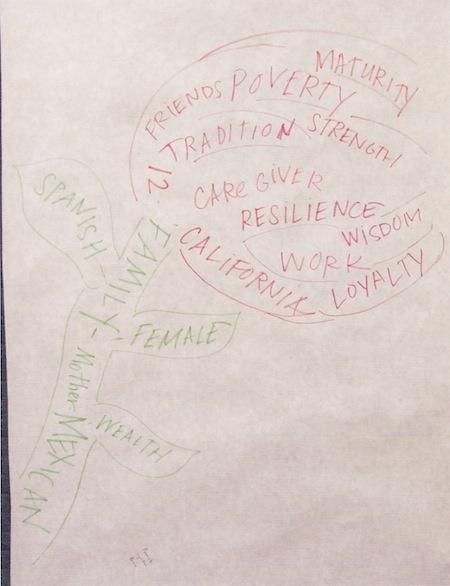
Figure 5. Group identity intersection for the character of Esperanza in Esperanza Rising.
At the end of the discussion, the group explained to the class that they organized the aspects of Esperanza’s identity into the shape of a rose, because roses were important symbols in the novel. The aspects of her identity that they perceived as foundational to the immature Esperanza at the beginning of the novel were written in green on the stem, and included nationality, language, class, gender and family structure. The group created the bloom of the rose with aspects of Esperanza’s mature identity at the end of the novel, including age, class, geographic association, family role, and several personality traits.
Creating identity intersections as a group activity during a literature discussion extends discussion as group members debate what aspects are important to the character and how each aspect affects their lives. Group members tend to return often to the book to find proof for their assertions about the character. Although the focus in this part of the literature discussion is on one specific character, it is common for the discussion to be wide-ranging, touching on other characters, plot, intertextual connections, and connections between the text and group members’ lives.
Final Thoughts
There are challenges with using identity intersections. One recurring challenge is simply getting students to grapple with the idea that the way people live their lives is influenced by their membership in various cultural groups. Because dominant American cultures are highly individualistic, many students believe that values, beliefs, and actions are entirely personal choices. Related to this is the difficulty in helping students understand the difference between aspects of cultural identities and personality traits. Students are often more comfortable talking about personality traits and must be encouraged to focus on cultural identities.
It is important to provide students with multiple opportunities to think about cultural identities through class engagements such as identity intersections, discussion, children’s and young adult literature, and professional readings. I find that though some students will be unable or unwilling to shift their thinking about cultural identities, using identity intersections several times across a semester will show growth in the complexity of their thinking.
Using identity intersections with undergraduate and graduate students has helped them think about culture and cultural identities in more sophisticated ways. The opportunity to reflect on their own lives has shown them how aspects of their cultural identity encourage certain behaviors or ways of thinking and how membership in particular cultural groups influences how people live their lives.
As a tool for exploring book characters, identity intersections focus and support thinking about cultures that are unfamiliar to the reader. This support, along with the talking, thinking, and learning that students do in relation to global and multicultural literature, adds to the understanding students build and the enjoyment they receive from reading books set in unfamiliar cultures.
References
Cushman, K. (1994). Catherine, Called Birdy. New York, NY: Clarion.
Foss, A. (2002). Peeling the onion: Teaching critical literacy with students of privilege. Language Arts, 79(5), 393-404.
Jaramillo, A. (2008). La Línea. New York, NY: Square Fish.
Ryan, P. M. (2002). Esperanza Rising. New York, NY: Scholastic.
Janine M. Schall is the Graduate Reading Coordinator at the University of Texas-Pan American College of Education. She also serves as Associate Dean for Graduate Studies.
WOW Stories, Volume IV, Issue 6 by Worlds of Words is licensed under a Creative Commons Attribution-NonCommercial-ShareAlike 4.0 International License.
Based on a work at https://wowlit.org/on-line-publications/stories/storiesiv6/.

I am looking at how scholars have used fiction literature to help illustrate organizational culture.
For example Carroll’s “Alice’s Adventures In Wonderland” as a means to begin to comprehend and unravel many of the crazy-making phenomenon in organizations.
This new interpretation of a work of literature then allow us to explore the idea using this common framework. (McCabe, 2016). ‘Curiouser and curiouser!’ Organization as Culture Performance. Communication Monographs 50, 126-147. doi:10.1177/0018726715618453
Are you aware of any other instances which scholars have used “fiction to analyze empirical material”?
My search continues and I welcome any knowledge you may have of such instances where art/ creative writing has complimented an unintended subject such as this.
Thank you.
Dear Rachelle,
I am really interested in your work, since my researches include literature, intercultural communication and corporates…
I would like to know something more about your works…and maybe we can share some ideas…
Looking forward to hearing from you,
Sveva
I am homeschooling my twin 12-year-olds this year due to the pandemic, and I want to make sure that they are learning about other cultures and ideas. it is good to know that literature is a great way for them to understand unfamiliar cultural settings by getting to know the characters. Plus, reading fiction is something my kids love to do, so that will get them excited about studying different cultures.